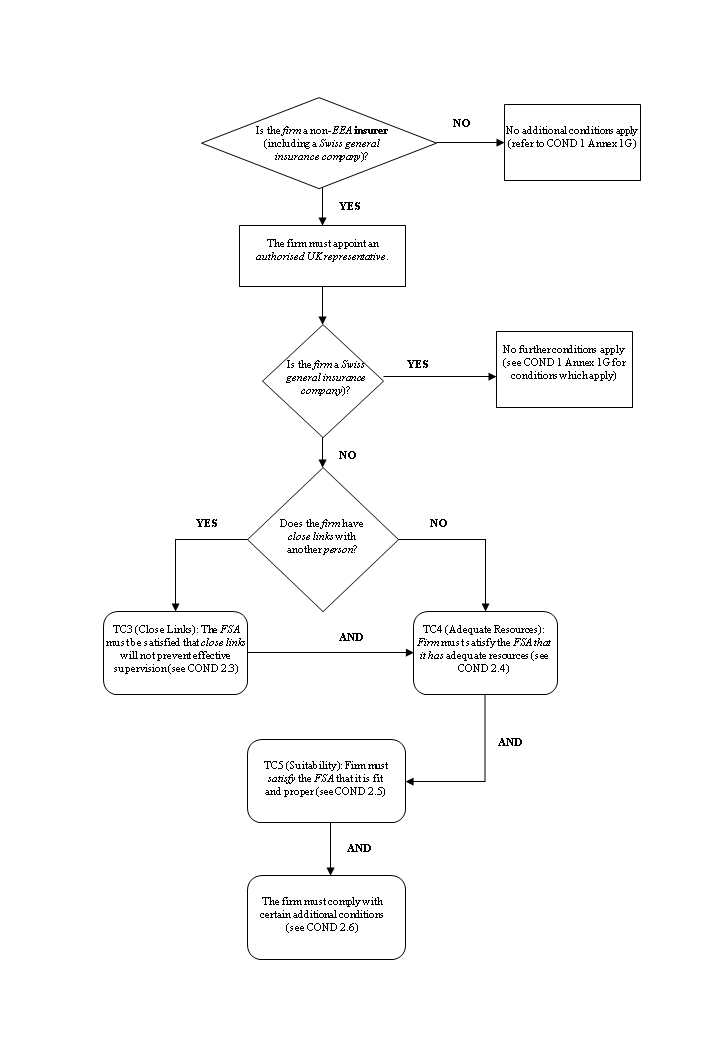COND 1.1 Application
Who?
COND applies to every firm, except that:
-
(1)
for an incoming EEA firm or an incoming Treaty firm only threshold conditions 1, 3, 4 and 5 apply and only in so far as relevant to:
- (a)
an application for a top-up permission under Part IV of the Act (that is, permission to carry on regulated activities in addition to those permitted through the incoming firm's authorisation under Schedule 3 (EEA Passport Rights) or 4 (Treaty Rights) to the Act ); and
- (b)
the exercise of the FSA's own-initiative power under section 45 of the Act (Variation etc on the FSA's own initiative) in relation to the top-up permission;
- (a)
-
(2)
COND also applies to an applicant for Part IV permission;
-
(3)
threshold conditions 3, 4 and 5 do not apply to a Swiss General Insurance Company; and
-
(4)
COND 2.6 (Additional conditions) is only relevant to non-EEA insurers.
In COND, 'firm' includes an applicant for Part IV permission unless the context otherwise requires.
What?
COND applies in relation to all of the regulated activities for which a firm has, or will have, permission, except as stated in COND 1.1.1 G (1).
Where?
COND applies in relation to all of the regulated activities wherever they are carried on, except as stated in COND 1.1.1 G (1).


